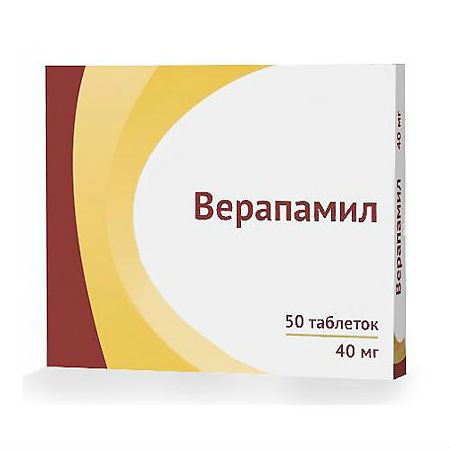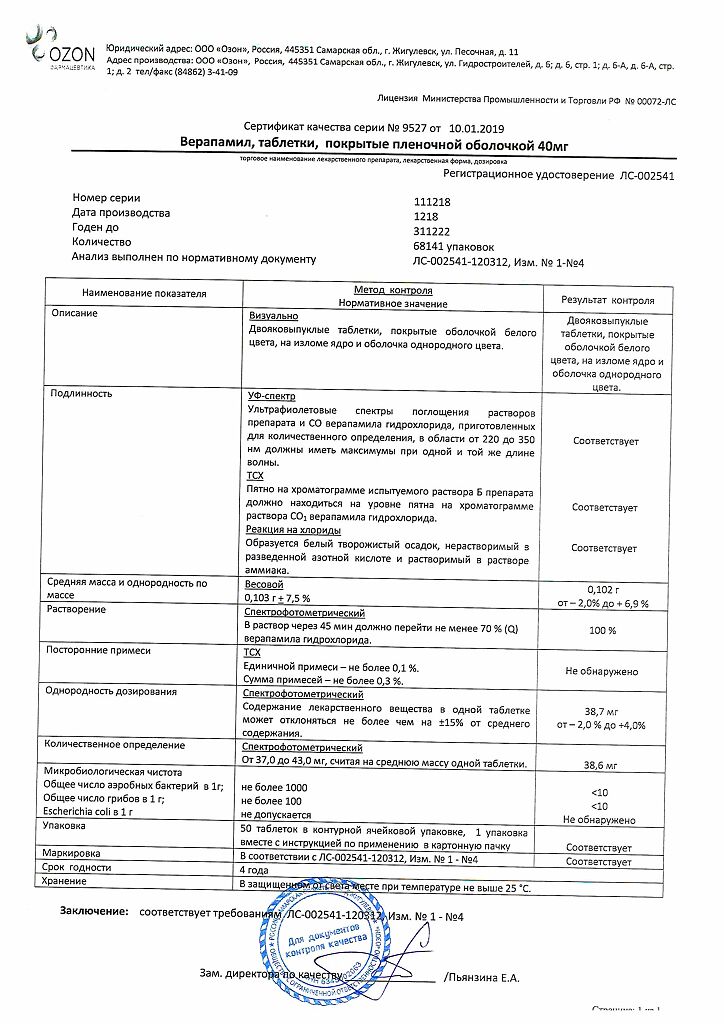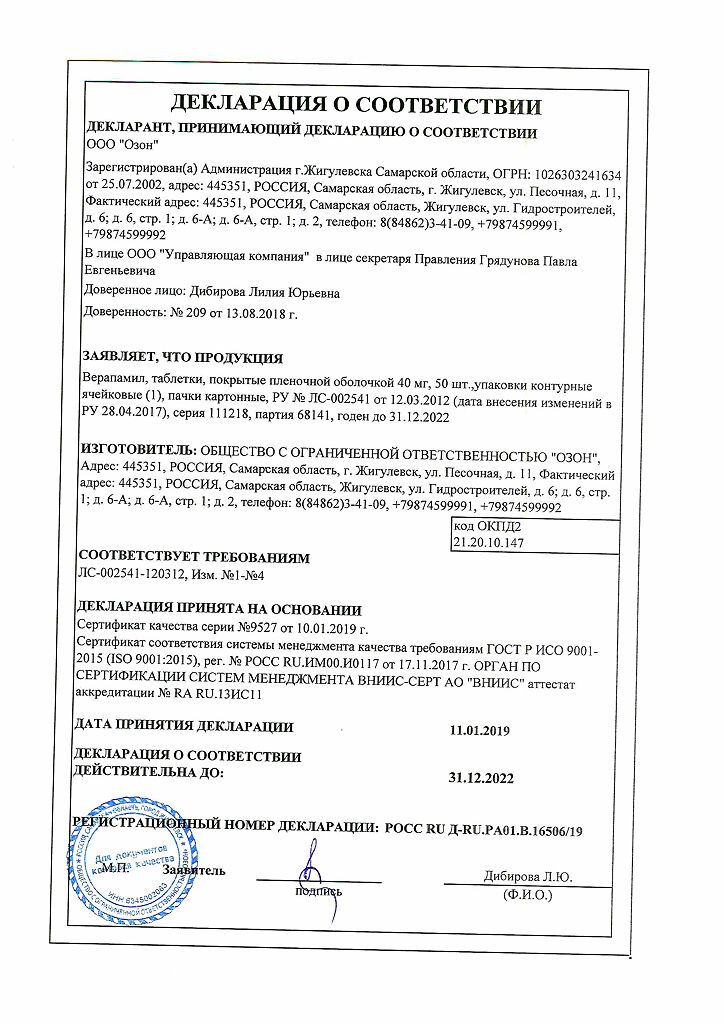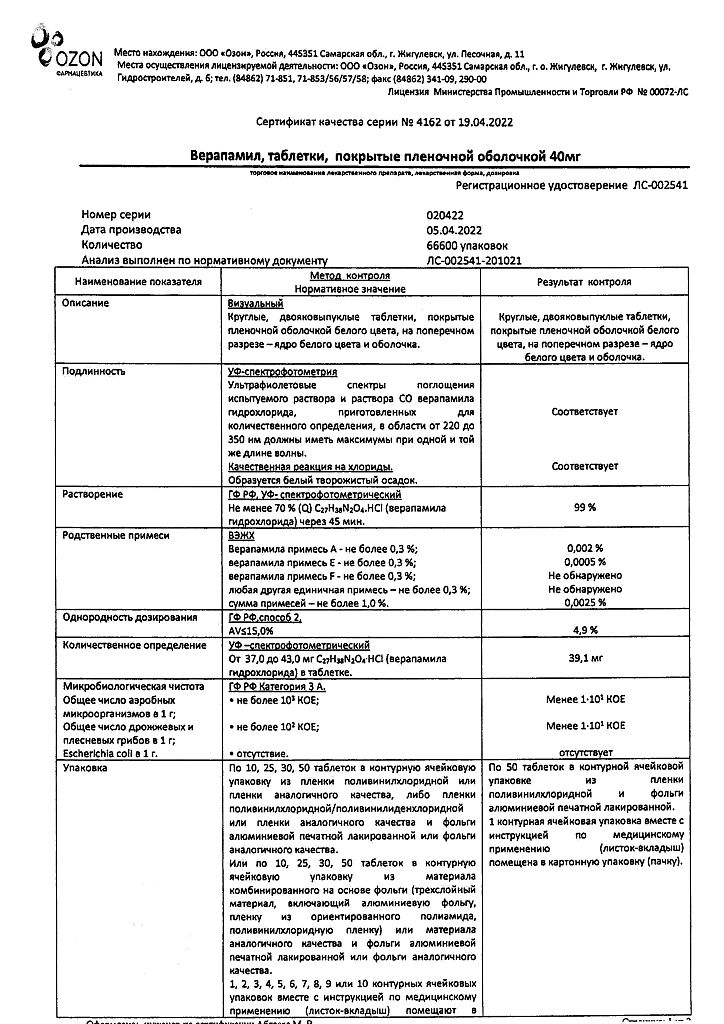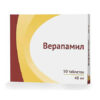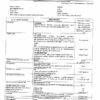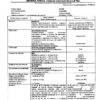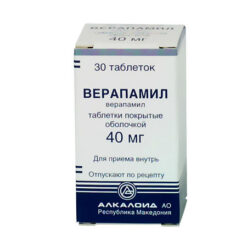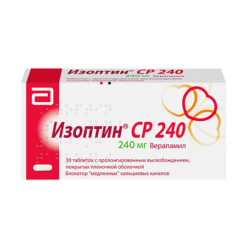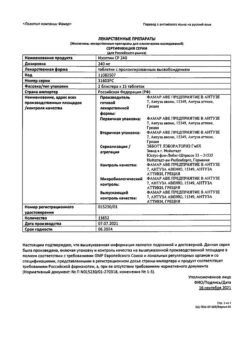No products in the cart.
Verapamil, 40 mg 50 pcs
€1.25 €1.04
Out of stock
(E-mail when Stock is available)
Description
Verapamil is a class I selective calcium channel blocker. The main pharmacological properties of the drug are due to its ability to prevent entry of calcium ions into cardiomyocytes and smooth muscle cells of the vascular wall through slow membrane calcium channels.
Verapamil has antiarrhythmic, antianginal and hypotensive activity. Reduces myocardial oxygen demand by reducing myocardial contractility and heart rate. Causes dilatation of coronary arteries and increased coronary blood flow.
The antihypertensive effect of Verapamil is associated with reduction of peripheral arterial smooth muscle tone and with the ability to reduce PPS. By slowing AV conduction, Verapamil has antiarrhythmic effect in supraventricular arrhythmias, normal HR remains unchanged or decreases insignificantly.
Verapamil also has some natriuretic and diuretic effects by reducing tubular reabsorption.
Indications
Indications
Prevention of angina attacks (including Prinzmetal’s angina); treatment and prevention of supraventricular arrhythmias (paroxysmal supraventricular tachycardia, atrial fibrillation, atrial flutter, extrasystole); arterial hypertension.
It is used intravenously for acute attacks of angina pectoris, attacks of supaventricular paroxysmal tachycardia and hypertensive crises.
Pharmacological effect
Pharmacological effect
Verapamil is a selective class I calcium channel blocker. The main pharmacological properties of the drug are due to its ability to prevent the entry of calcium ions into cardiomyocytes and smooth muscle cells of the vascular wall through slow calcium channels of the membrane.
Verapamil has antiarrhythmic, antianginal and hypotensive activity. Reduces myocardial oxygen demand by reducing myocardial contractility and reducing heart rate. Causes dilatation of the coronary arteries and an increase in coronary blood flow.
The antihypertensive effect of Verapamil is associated with a decrease in the tone of the smooth muscles of peripheral arteries and with the ability to reduce peripheral vascular resistance. By slowing down AV conduction, Verapamil has an antiarrhythmic effect in supraventricular arrhythmias; normal heart rate remains unchanged or decreases slightly.
Verapamil also has some natriuretic and diuretic effects by reducing tubular reabsorption.
Special instructions
Special instructions
Prescribe with caution to patients with hypertrophic cardiomyopathy complicated by left ventricular obstruction, high wedge pressure in the pulmonary capillaries, paroxysmal nocturnal dyspnea or orthopnea, dysfunction of the sinoatrial node.
When prescribed to patients with severe impairment of liver function and neuromuscular transmission (Duchenne myopathy), constant medical supervision and possibly a dose reduction are required.
Active ingredient
Active ingredient
Verapamil
Composition
Composition
Active substance:
verapamil hydrochloride 40 mg.
Excipients:
calcium phosphate disubstituted,
starch,
butylated hydroxyanisole,
purified talc,
magnesium stearate,
gelatin,
methylparaben,
hydroxypropyl methylcellulose,
titanium dioxide,
indigo carmine.
Contraindications
Contraindications
Severe arterial hypotension, AV block of the second and third degrees, sinoatrial block and SSSU (except for patients with a pacemaker), WPW syndrome or Lown-Ganong-Levine syndrome in combination with atrial flutter or fibrillation (except for patients with a pacemaker), pregnancy, lactation, hypersensitivity to verapamil.
Side Effects
Side Effects
From the cardiovascular system: bradycardia (less than 50 beats/min), marked decrease in blood pressure, development or worsening of heart failure, tachycardia; rarely – angina pectoris, up to the development of myocardial infarction (especially in patients with severe obstructive lesions of the coronary arteries), arrhythmia (including ventricular fibrillation and flutter); with rapid intravenous administration – third degree AV block, asystole, collapse.
From the central nervous system and peripheral nervous system: dizziness, headache, fainting, anxiety, lethargy, fatigue, asthenia, drowsiness, depression, extrapyramidal disorders (ataxia, mask-like face, shuffling gait, stiffness of the arms or legs, trembling of the hands and fingers, difficulty swallowing).
From the digestive system: nausea, constipation (rarely – diarrhea), gum hyperplasia (bleeding, pain, swelling), increased appetite, increased activity of liver transaminases and alkaline phosphatase.
Allergic reactions: skin itching, skin rash, facial skin flushing, erythema multiforme exudative (including Stevens-Johnson syndrome).
Other: weight gain, very rarely – agranulocytosis, gynecomastia, hyperprolactinemia, galactorrhea, arthritis, transient loss of vision against the background of Cmax, pulmonary edema, asymptomatic thrombocytopenia, peripheral edema.
Interaction
Interaction
Increases plasma levels of digoxin, cyclosporine, theophylline, carbamazepine, and decreases lithium.
Weakens the antibacterial activity of rifampicin, the depressing effect of phenobarbital, reduces the clearance of metoprolol and propranolol, and enhances the effect of muscle relaxants. Rifampicin, sulfinpyrazone, phenobarbital, calcium salts, vitamin D – weaken the effect.
The hypotensive effect is enhanced by antihypertensive drugs (diuretics, vasodilators), tricyclic and tetracyclic antidepressants and antipsychotics: antianginal – nitrates.
Beta-blockers, class IA antiarrhythmics, cardiac glycosides, inhalational anesthetics, and radiopaque agents potentiate a (mutually) inhibitory effect on the automatism of the sinoatrial node, AV conduction and myocardial contractility. With the simultaneous use of verapamil with acetylsalicylic acid – increased bleeding. Cimetidine increases the plasma levels of verapamil.
Overdose
Overdose
Symptoms: arterial hypotension, bradycardia, AV block, cardiogenic shock, coma, asystole.
Treatment: calcium gluconate (10–20 ml of 10% IV solution) is used as a specific antidote; for bradycardia and AV block, atropine, isoprenaline or orciprenaline are administered; for hypotension – plasma-substituting solutions, dopamine, norepinephrine; if signs of heart failure appear, dobutamine.
Storage conditions
Storage conditions
In a dry place, protected from light, at a temperature not exceeding 25 °C
Shelf life
Shelf life
3 years
Manufacturer
Manufacturer
Ozon, Russia
Additional information
| Shelf life | 3 years |
|---|---|
| Conditions of storage | In a dry, light-protected place at a temperature not exceeding 25 °C |
| Manufacturer | Ozon, Russia |
| Medication form | pills |
| Brand | Ozon |
Other forms…
Related products
Buy Verapamil, 40 mg 50 pcs with delivery to USA, UK, Europe and over 120 other countries.

